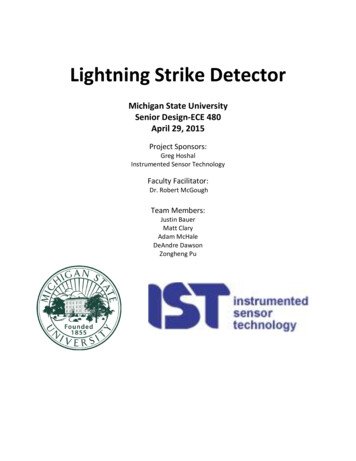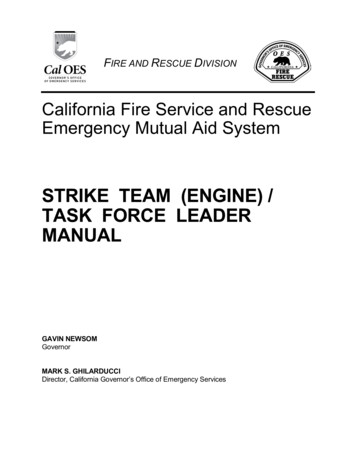
Transcription
Journal of Geoscience and Environment Protection2013. Vol.1, No.3, 12-17Published Online December 2013 in SciRes g/10.4236/gep.2013.13003Intraplate Strike-Slip Reactivation of the Sinnyeong Fault in theCretaceous Gyeongsang Basin, Korea, Due to the Concentrationof Later Compressional StressYoungbeom Cheon, Cheol Woo Song, Son Kap Lee, Jong-Sun Kim, Moon Son*Department of Geological Sciences, Pusan National University, Busan, South KoreaEmail: moonson@pusan.ac.krReceived October 2013This study focuses on the geometry and kinematics of the Sinnyeong Fault which is the most conspicuousfault among the WNW-trending Gaeum Fault System in the Gyeongsang Basin, SE Korea. The fault istraced for over ca. 70 km and has a consistent WNW-trending strike with a nearly vertical dip. It has anasymmetric fault damage zone of several meters to several tens of meters in width and a several metersthick fault core. Its main movement is interpreted as sinistral-reverse oblique-slip or sinistral strike-slipunder NE-SW compressional stress regime, although it could have experienced other faultings with different senses before/after this movement. Cylindrical folds, having the NW-trending fold axes of low-angle plunge, are only observed along the southern damage zone of the fault with a continuous narrow widthof several tens of meters. It is thus interpreted that the formation of the folds and sinistral movement ofthe fault were almost contemporaneously generated due to the concentration of the regional NE-SW compressional stress along pre-existing WNW-trending faults or densely populated fracture zone in a relatively stable intraplate region.Keywords: Sinnyeong Fault; Sinistral-Reverse Oblique-Slip; Compressional Stress; Pre-Existing FaultIntroductionThe Gyeongsang Basin, located in the eastern part of theKorean Peninsula, is a Cretaceous back-arc basin produced bythe oblique subduction of the Proto-Pacific (Izanagi/Kula) plateunderneath the Eurasia plate (Chough et al., 2000; Chough &Sohn, 2010; Figure 1). It was filled by the Cretaceous-Paleogene non-marine sedimentary and igneous rocks. The faultsystems in the basin are generally divided into two types, i.e.NNE-trending Yangsan Fault and WNW-trending Gaeum Faultsystems, based on the attitudes (Figure 1). Their geometry andkinematics are potentially important for understanding the development history of the Gyeongsang Basin associated withtectonic evolution in East Asia during the Cretaceous to Cenozoic, because the basin-fills were cut by these fault systems(Figure 1). While various geological studies along the YangsanFault System have been carried out (Chang et al., 1990; Kim,1992, 1993; Chang, 2002; Chang & Chang, 1998; Cho et al.,2007, Choi et al., 2009; Kang & Ryoo, 2009, etc.), detailedstructural analyses of the Gaeum Fault System, including descriptive and kinematic analyses, are not performed althoughseveral geological mappings along the fault system were carriedout (Chang et al., 1977, 1978, 1981; Won et al., 1980; Kim etal., 1981).The aim of this study is to decipher the geometry and kinematics of the Sinnyeong Fault which is one of the most conspicuous strands comprising the Gaeum Fault System (Figure 1).By detailed field descriptions along the fault, various structuralelements, such as slip data of various scale faults and shearfractures, attitudes of extensional fracture, and beddings of*Corresponding author.12adjacent sedimentary rocks, were measured and analyzed todetermine the nature of deformation along the fault and to examine the causative paleostress field.Geological BackgroundThe Gyeongsang Basin can be tectonically divided into threesubbasins, i.e. Yeongyang, Uiseong, and Miryang subbasinsfrom north to south (Chang, 1975; Figure 1). The Gaeum FaultSystem is located in the Uiseong Subbasin which was filled bynon-marine sedimentary, volcanic, and plutonic rocks. Thesedimentary rocks are divided into the Sindong and Hayanggroups which are intruded and/or overlain by acidic-intermediate volcanic complex, named Yucheon Group. Afterwards,the Bulguksa granites, containing acidic and intermediate intrusive rocks, immediately intruded the earlier strata (Chang et al.,1977, 1981; Won et al., 1980; Kim et al., 1981).The WNW-trending Gaeum Fault System consists of theHwanghaksan, Uiseong, Geumcheon, Jarak, Gaeum, Gunwi,Ubo, Sinnyeong, and Palgongsan faults from north to south andcuts the above-mentioned sedimentary, volcanic, and intrusiverocks as well as several cauldrons with sinistral offset (Chang etal., 1977, 1981; Won et al., 1980; Kim et al., 1981; Choi et al.,2004). The geological map of the Daeyul Sheet (1/50,000) reported that the Sinnyeong Fault is a sinistral strike-slip fault(Kim et al., 1981). Other 1/50,000 geological maps (the Gusandong, Sinnyeong, and Gunwi Sheets) interpreted that theintrusive rocks intruded along the pre-existing WNW-trendingfaults, afterwards these faults reacted as sinistral strike-slipfaults, based on the sub-parallel trends of the intrusions and thefaults (Chang et al., 1977, 1981; Won et al., 1980). Chang &Open Access
Y. CHEONETAL.Figure 1.(A) Tectonic outline of the eastern Eurasian margin (modified after Xu et al., 1987; Ren et al., 2002; Itoh et al., 2006), 1. Tan-Lu Fault, 2. NenjiangFault, 3. Yilan-Yitong Fault Zone, 4. Fushan-Mishan Fault, 5. South Korean Tectonic Line, 6. Yangsan Fault System, 7. Median Tectonic Line, 8.Itoigawa-Shizuoka Tectonic Line, 9. Tanakura Tectonic Line. (B) Simplified geological map (modified from Hwang et al., 1996; Kim et al., 1998;Choi et al., 2002) and key beds (modified from Jeong et al., 2005; Jeon & Sohn, 2008; Hwang & Woo, 2009) of the Gyeongsang Basin. Stratigraphiccorrelation is reconstructed from Chang et al. (2003), Chough & Sohn (2010), and Kang & Paik (2013).Park (1997) and Chang et al. (1997) also suggested that thePalgongsan Fault acted as a syn-depositional fault during thedeposition of the lower strata of the Hayang Group, afterwardsacted as a conduit of the Palgongsan Granite, and finallyreacted as sinistral strike-slip fault. Based on topographic texture analysis, Choi et al. (2004) interpreted that dextral movement along the Sinnyeong Fault occurred during the Campanianto Eocene, afterwards the fault was reactivated as a sinistralstrike-slip faults together with nearby WNW-trending faultsduring the Pliocene. They also argued that the NNE-trendingYangsan Fault was cut and left-laterally displaced by them. Onthe other hand, Lee & Hwang (1997) suggested that the sinistralstrike-slip movement of the Gaeum Fault System and associated NS-trending open folding were produced under EWcompressive stress field which was followed by NE-SW compressive stress field resulting in dextral strike-slip faulting ofOpen Accessthe Yangsan Fault System.Structures CharacteristicsField Descriptions along the FaultThe Sinnyeong Fault, observed in the Site-1, has a nearlyvertical dip with a strike of N70 W, and cuts the sandstone andsiltstone of the Hayang Group. An about 6 m-thick fault core iscomposed of incohesive fault breccias and gouges, which anastomose and link up with each other (Figure 2(A)). They alsoshow a NW-trending rearrangement (foliation in S-C fabric)indicating sinistral movement of the fault (Figures 2(B), (C)).Sinistral-reverse oblique-slip senses with rakes less than 20 areobserved on the main fault surfaces. In the damage zone, a lotof ENE-trending shear fractures having sinistral sense (Figure2(D)) and NE-trending extensional fractures showing comb13
Y. CHEONETAL.Figure 2.Outcrop photographs of the Sinnyeong Fault. (A) A photograph of an exposure of the fault showing a WNW-trending fault zone. (B) Pervasivelycrushed rocks in a fault core and strata having vertical dip angles in a fault damage zone. (C) NW-trending rearrangement (foliation in S-C fabrics) ina fault core indicating sinistral movement of the fault. (D) ENE-trending shear fractures showing sinistral sense. (E) A NE-trending extensional fracture showing comb structure. (F) A NW-trending fold observed in the southern damage zone of the fault. (G) Slip data in the fault zone (lower-hemisphere, equal-area projections). Convergent and divergent arrow heads represent contraction (σHmax) and horizontal stretching (σHmin) direction,respectively (Choi, 1995). (H) Fold axes estimated from best-fitting π-circles of various attitudes of fold limbs.structures (Figure 2(E)) are frequently observed. Meanwhile,the strike of sedimentary strata tends to be more parallel to thestrike of the fault and the dip becomes more vertical closer tothe fault core, but these features are remarkably dominant in thesouthern block of the fault. NW-trending folds having severalmeters in width are also observed in about 60 m-thick faultdamage zone of the southern block (Figure 2(F)).The main fault, observed in the Site-2, strikes N87 W anddips 72 SW on outcrop and has about 1 m-thick fault core consisting of incohesive fault gouges and breccias. Slickenlinesindicating sinistral-reverse oblique-slip sense are observed onthe main fault surface. Meanwhile, it is notable that the bedattitudes adjacent to the main fault are markedly discriminablein the northern and southern blocks of the fault. In details, thebed attitudes in the northern block mainly define a homoclinalstructure dipping toward the NW with 10 - 15 angles, whereasthose in the southern blocks define a few meters to centimeters-width folds having constantly northwestward-plunging foldaxes with about 20 angles.Cylindrical Folds along the FaultsThe bed attitudes of the sedimentary rocks in the UiseongSubbasin generally define a homoclinal structure dipping toward east or east-southeast, although this pattern is complicatedby intrabasinal faulting and formation of cauldrons.The various scale cylindrical folds observed along the southern damage zone of the Sinnyeong Fault thus can be attributedto (1) the regional stress causing movement of the fault or (2)the dragging associated with the faulting. The geometry of foldsproduced by regional stress is, however, distinguishable fromthat of drag folds, because the folds mostly show a cylindricalgeometry and similar trends of the axes. The fold axes thus canbe used to reconstruct the paleostress field and to determine the14direction of crustal contraction (Jonk & Biermann, 2002; Kimet al., 2008; etc.). On the other hand, the drag folds are resultsof a distortion of bedding or other layering, resulting fromshearing of rock bodies (Davis & Reynolds, 1984; Twiss &Moores, 2007; etc.), and can be an important role for inferringthe movement sense of faulting (Becker, 1995; Choi et al.,2004). Geometry of drag fold is significantly affected by themovement sense of fault and pressure-temperature conditions.In other words, dip-slip faulting generally forms a cylindricaldrag fold with the slip direction roughly perpendicular to thefold axis, whereas oblique-slip and strike-slip faulting can beeasy to form a conical fold excepting one formed by only flexural slip without volume redistribution (Becker, 1995).The features of the observed folds along the Sinnyeong Faultare as follows. (1) Cylindrical geometry, (2) tens of meters toseveral centimeters in width, (3) various tightness, gentle totight folds, (4) NW-trending fold axes with low-angle plunge(Figure 2(H)), and (5) concentration of their distribution in thesouthern damage zone of the fault with a continuous narrowwidth of several tens of meters. These structural characteristicsimply that the folding was intimately related with regionalcompressional stress rather than dragging or distortion by faulting.Reconstruction of Paleostress FieldsA few centimeters to ten meters-width cylindrical folds having various interlimb angles are intensively distributed in thesouthern damage zone of the Sinnyeong Fault. We reconstructed the fold axis estimated from best-fitting π-circles ofvarious attitudes of fold limbs in the Site-1. The fold axis trendsS53 E and plunges 23 southeastward (Figure 2(H)), which isapproximately the same attitude to those of minor folds measured in the field.Open Access
Y. CHEONA number of slip data from minor faults observed close tothe Sinnyeong Fault were measured and analyzed to reconstructthe paleostress fields. The results show the sinistral movementof the fault was produced under a NE-SW compressional stress(R' 1.744; Delvaux et al., 1997; Figure 2(G)). Several NEtrending calcite veins, observed in the Site-1, also show combstructures growing in NW-SE direction that is commonly controlled by the instantaneous stretching axis. It is thus interpretedthat the formation of the NE-trending calcite veins was nearlycoeval with the sinistral movement of the Sinnyeong Fault under the NE-SW compressional stress regime.These kinematic indicators show that the sinistral movementof the Sinnyeong Fault was produced under the NE-SW compressional stress accompanying the subsidiary minor contractional and extensional structures in the southern fault damagezone of the fault.DiscussionGeometry and Kinematics of the Sinnyeong FaultThe lineament of the Sinnyeong Fault, strikingly recognizedin the satellite and DEM images, is continuously traced withN70 W trend. The strikes of the fault measured in outcrops,however, range from N49 to 87 W with subvertical dips toward north or south. The damage zone of several meters toseveral tens of meters in width and a several meters-thick faultcore are observed along the fault. It is notable that the southernblock of the fault is more deformed than the northern block inmost observed outcrops.Most of the kinematic indicators suggest sinistral-reverse oblique-slip or sinistral strike-slip movements along the WNWtrending faults associated with partial compression, althoughdip-slip and dextral-slip senses are occasionally observed. Because the slip direction and sense determined by kinematicindicator such as slickenline, crystal fiber, and ridge and groovestructure on the fault surfaces generally indicate the last orstrongest movement of faults (Becker, 1995), the sinistral movement of the faults is interpreted to represent the last or strongestdisplacement of the faults.Contractional Structures and Fault ReactivationThe NW-trending folds distributed only along and adjacentto the Sinnyeong Fault, compressional component observed onthe main fault, and NE-SW-directed maximum horizontal stressreconstructed from the fault slip data indicate collectively thatthe formation of the folds was contemporaneous with or immediately before the sinistral movement of the fault. It is notablethat the contractional structures in the host rocks are significantly concentrated within the continuously narrow zone ofseveral tens of meters along the fault, implying that the sinistralmovement of the fault and formation of the contractional structures resulted from the reactivation of suitably oriented preexisting fault and/or weakened zone (Letouzey et al., 1990;Cunningham, 2007; Mann, 2007; Cunningham & Mann, 2007).The sinistral reactivation of pre-existing fault and/or weakened zone is also supported by the following evidences.Firstly, multiple slip senses including normal-slip are occasionally observed on the main fault surfaces, although the sinistralreverse oblique-slip is most dominant. Secondly, several previous studies suggested that the initial movement of the WNWtrending faults was coeval with the deposition of the lowerOpen AccessETAL.strata of the Hayang Group and then they played a role as conduits of the granitic magma (Chang et al., 1977, 1981; Won etal., 1980; Chang & Park, 1997; Chang et al., 1997). Thirdly,Chang (1975) interpreted that Miryang and Uiseong subbasinswas tectonically divided by the Palgongsan Fault (or Palgongsan Granite), based on the abrupt change of sedimentary faciesacross the fault.Reactivation of pre-existing faults or alternatively new failures depend on the geometry of pre-existing faults, state ofstress, physical properties of fault rocks (cohesion, friction,etc.), mineralogic/chemical weakening of fault rocks, fluidpressure conditions, and so on (Sibson, 1985; Letouzey et al.,1990; Holdsworth et al., 1997). Movement sense of the reactivation faults was crucially controlled by the geometry of thepre-existing fault in relation with the regional stress field. Inother words, some pre-existing faults having high angles couldnot be easily reactivated or could be reactivated as strike-slipfaults rather than reverse faults, when the strikes of the faultsare nearly perpendicular or oblique to the orientations of maximum horizontal stress (Davis & Reynolds, 1984; Letouzey etal., 1990). In case of the Sinnyeong Fault, the angle betweenthe direction of maximum horizontal stress and strike of thefault is about 70 - 80 and the dips of the fault are subvertical,which also supports that the Sinnyeong Fault has been reactivated as a sinistral fault under the NE-SW compressional stress.In short, it is interpreted that the sinistral faulting of the Sinnyeong Fault was produced by the concentration of the regionalcompressional stress along the pre-existing WNW-trendingfaults or densely populated fracture zone within a relativelystable intraplate region (Figure 3).ConclusionDetailed field descriptions along the fault and kinematicanalysis were carried out in order to determine the geometryand kinematics of the Sinnyeong Fault. The results are as follows.(1) The Sinnyeong Fault is traced for over 70 km and has aconsistent WNW-trending strike with nearly vertical dips. It hasan asymmetric fault damage zone of several meters to severaltens of meters in width and a several meters-thick fault coreconsisting of incohesive fault gouges and breccias. Based onthe lateral offset of ca. 1 km, slip markers on fault plane, andrearranged fault gouges and breccias (S-C fabric), its mainmovement is interpreted as sinistral-reverse oblique-slip or sinistral strike-slip.(2) Associated minor structures observed in the fault zone,such as shear and extensional fractures and cylindrical folds,also indicate that the main movement of the fault was sinistralreverse oblique-slip produced under the NE-SW compressionalstress regime, although it could have experienced other faultings with different senses before/after this movement. Bed attitudes of sedimentary rocks within the fault damage zone tend tobe more parallel to the fault attitude closer to the fault core andthis feature is observed much more obviously in the southernblock of the fault.(3) NW-trending cylindrical folds, produced by the regionalcompressional stress, are also exclusively distributed along thesouthern damage zone of the fault with a continuous narrowwidth of several tens of meters, indicating that the formation offolds is contemporaneous with or immediately before the sinistral movement of the fault under the NE-SW compressional15
Y. CHEONETAL.Figure 3.Schematic diagrams illustrating a sinistral reactivation of the Sinnyeong Fault. (A) A WNW-directed pre-existing fault; (B) Formation of folds alongthe pre-existing fault or dense fracture due to concentration of regional NE-SW compressional stress; (C) Sinistral reactivation of the fault underprogressive compressional stress.stress regime. It is thus interpreted that the sinistral movementof the Sinnyeong Fault was produced by the concentration ofregional compressional stress along pre-existing WNW-trending faults or dense fractures within a relatively stable intraplateregion.AcknowledgementsThis work was supported by the Korea CCS R&D Center(KCRC) grant funded by the Korea government (Ministry ofScience, ICT & Future Planning) (No. 2013M1A8A1035887).REFERENCESBecker, A. (1995). Conical drag folds as kinematic indicators forstrike-slip fault motion. Journal of Structural Geology, 17, 14971506. g, K. H. (1975). Cretaceous stratigraphy of southeast Korea.Journal of the Geological Society of Korea, 11, 1-23.Chang, K. H., & Park, S. O. (1997). Aspects of tectonics and volcanismrecorded in Cretaceous medial Kyongsang Basin, SE Korea. Economic and Environmental Geology, 30, 143-151 (in Korean with English Abstract).Chang, K. H., Park, H. I., Ko, I. S., & Kim, H. M. (1977). 1: 50,000geological map of Korea: The Gusandong sheet (25 p). Daejeon:KIGAM.Chang, K. H., Park, S. O., & Kim, H.-S. (1997). Cretaceous stratigraphy and geologic history of medial Kyongsang Basin: Tectonics andvolcanism. Geosciences Journal, 1, 2-9.http://dx.doi.org/10.1007/BF02910444Chang, K. H., Park, H. I., Ko, I. S., & Kim, H. M. (1981) 1: 50,000geological map of Korea: The Gunwi sheet (25 p). Daejeon: KIGAM.Chang, K. H., Woo, B. G., Lee, J. H., Park, S. O., & Yao, A. (1990).Cretaceous and Early Cenozoic stratigraphy and history of easternKyongsang Basin, S. Korea. Journal of the Geological Society ofKorea, 26, 471-487.Chang, K. H., Koh, I. S., Park, H. I., Chi, J. M., & Kim, H. M. (1978). 1:50,000 geological map of Korea: The Cheonji sheet (20 p). Daejeon:KIGAM.Cunningham, D. (2007). Structural and topographic characteristics ofrestraining bend mountain ranges of the Altai, Gobi Altai and easternmost Tien Shan. In W. D. Cunningham, & P. Mann (Eds.), Tectonics of strike-slip restraining and releasing bends (pp. 219-237).London: Geological Society, Special g, K.-H., Suzukib, K., Parka, S.-O., Ishida, K., & Uno, K. (2003).Recent advances in the Cretaceous stratigraphy of Korea. Journal ofAsian Earth Sciences, 21, 142-6Chang, C. J., & Chang, T. W. (1998). Movement history of the Yangsan fault based on Paleostress analysis. The Journal of Engineering16Geology, 8, 35-49 (in Korean with English Abstract).Cho, H., Son, M., & Kim, I.-S. (2007). Anisotropy of magnetic susceptibility (AMS) of the granitic rocks in the eastern region of theYangsan fault. Economic and Environmental Geology, 40, 171-189(in Korean with English Abstract).Choi, J.-H., Yang, S.-J., & Kim, Y.-S. (2009). Fault zone classificationand structural characteristics of the southern Yangsan fault in theSangcheon-ri area, SE Korea. Journal of the Geological Society ofKorea, 45, 9-28 (in Korean with English Abstract).Choi, P. Y. (1995). Aspects of stress inversion methods in fault tectonicanalysis. Annales Tectonicae, 9, 22-38.Choi, P. Y., Lee, S. R., Ko, I.-S., & An, G.-O. (2004). Movement history of the Gaeum fault system. In Y. S. Lee, Y. H. Kihm, P. Y. Choi,A. Reedman, S.-Y. Kim, I.-J. Kim, S. Lee, H.-J. Shin, & D. Shin,(Eds.), Cenozoic stratigraphy and tectonics of Korea (pp. 211-228).The 3rd and 4th Symposiums on the Geology of Korea, Special Publication No. 2. Korea Institute of Geoscience and Mineral Resources.Choi, P. Y., Choi, H. I., Hwang, J. H., Kee, W.-S., Koh, H. J., Kim, Y.B., Lee, B. J., Song, K. Y., Kim, J. C., & Choi, Y. S. (2002). 1:250,000 geological map of Korea: The Mokpo and Yeosu sheets (48p). Daejeon: KIGAM.Chough, S. K., Kwon, S.-T., Ree, J.-H., & Choi, D. K. (2000). Tectonicand sedimentary evolution of the Korean peninsula: A review andnew view. Earth-Science Reviews, 52, 029-5Chough, S. K., & Sohn, Y. K. (2010). Tectonic and sedimentary evolution of a Cretaceous continental arc-backarc system in the Koreanpeninsula: New view. Earth-Science Reviews, 101, .05.004Cunningham, W. D., & Mann, P. (2007). Tectonics of strike-slip restraining and releasing bends. In W. D. Cunningham, & P. Mann(Eds.), Tectonics of strike-slip restraining and releasing bends (pp.1-12). London: Geological Society, Special s, G. H., & Reynolds, S. J., (1984). Structural geology of rocks andregions (2nd ed., 776 p). New York: John Wiley & Sons, Inc.Delvaux, D., Moeys, R., Stapel, G., Petit, C., Levi, K., Miroshnichenko,A., Ruzhich, V., & San’kov, V. (1997). Paleostress reconstructionsand geodynamics of the Baikal region, Central Asia, Part 2. Cenozoicrifting. Tectonophysics, 282, -2Hwang, J. H., Kim, D. H., Cho, D. R., & Song, K. Y. (1996). 1:250,000 geological map of Korea: The Andong sheet (63 p). Daejeon:KIGAM.Hwang, S. K., & Woo, B. G. (2009) Role of the cheongryangsan conglomerate and the osipbong basalt in classifying stratigraphy of theHayang Group, Yeongyang Subbasin. Journal of Petrology of Society of Korea, 18, 181-194 (in Korean with English Abstract).Holdsworth, R. E., Butler, C. A., & Roberts, A. M. (1997). The recognition of reactivation during continental deformation. Journal of theGeological Society, London, 154, oh, Y., Uno, K., & Arato, H. (2006). Seismic evidence of divergentrifting and subsequent deformation in the southern Japan Sea, and aOpen Access
Y. CHEONCenozoic tectonic synthesis of the eastern Eurasian margin. Journalof Asian Earth Science, 27, .008Jeon, Y. M., & Sohn, Y. K. (2008). Characteristics, emplacement processes, and stratigraphic implications of the basalts intercalated in theHayang Group, Cretaceous Gyeongsang Basin, SE Korea. Journal ofthe Geological Society of Korea, 44, 707-727 (in Korean with English Abstract).Jeong, J. O., Jeon, Y. M., & Sohn, Y. K. (2005). Petrography and modal compositional variations of the Cretaceous Kusandong Tuff, Korea.Journal of the Geological Society of Korea, 41, 73-90 (in Koreanwith English Abstract).Jonk, R., & Biermann, C. (2002). Deformation in Neogene sedimentsof the Sorbas and Vera Basins (SE Spain): Constraints on simpleshear deformation and rigid body rotation along major strike-slipfaults. Journal of Structural Geology, 24, 107-9Kang, H.-C., & Paik, I. S. (2013). Review on the geological ages of theformations in the Gyeongsang Basin, Korea. Journal of the Geological Society of Korea, 49, 17-29 (in Korean with English Abstract).Kang, J.-H., & Ryoo, C.-R. (2009). The movement history of the southern part of the Yangsan Fault Zone interpreted from the geometricand kinematic characteristics of the Sinheung Fault, Eonyang, Gyeongsang Basin, Korea. Journal of the Petrological Society of Korea,1, 19-30 (in Korean with English Abstract).Kim, B. K., Cheong, C. H., Kim, S. J., & Yang, S. Y. (1981). 1: 50,000geological map of Korea: The Daeyul sheet (29 p). Daejeon: KIGAM.Kim, D. H., Hwang, J. H., Park, K. H., & Song, K. Y. (1998). 1:250,000 geological Map of Korea: The Pusan sheet (36 p). Daejeon:KIGAM.Kim, H., Song, C.-W., Kim, J.-S., Son, M., & Kim, I.-S. (2008). Tertiary geological structures and deformation history of the SouthernTsushima Island, Japan. Journal of the Geological Society of Korea,44, 175-198 (in Korean with English Abstract).Kim, I.-S. (1992). Origin of tectonic evolution of the East Sea (Sea ofJapan) and the Yangsan fault system: A new synthetic interpretation.Journal of the Geological Society of Korea, 28, 84-109 (in KoreanOpen AccessETAL.with English Abstract).Kim, J.-Y. (1993). Fault system and fracture zone of the Yangsan fault.Journal of Korean Earth Science Society, 14, 281-299 (in Koreanwith English Abstract).Lee, B. J., & Hwang, J. H. (1997). Relationship between the Kaumfault and the Yangsan fault at the northeastern part of the CretaceousKyongsang Basin, Korea. Journal of the Geological Society of Korea,33, 1-8 (in Korean with English Abstract).Letouzey, J., Werner, P., & Marty, A. (1990). Fault reactivation andstructural inversion. Backarc and intraplate compressive deformations. Example of the eastern Sunsa shelf (Indonesia). Tectonophysics, 183, 341-362. , P. (2007). Global catalogue, classification and tectonic origins ofrestraining- and releasing bends on active and ancient strike-slip faultsystems. In W. D. Cunningham, & P. Mann (Eds.), Tectonics of strikeslip restraining and releasing bends (pp. 13-142). London: Geological Society, Special Publications. http://dx.doi.org/10.1144/SP290.2Ren, J., Tamaki, K., Li, S., & Junxia, Z. (2002). Late Mesozoic andCenozoic rifting and its dynamic setting in Eastern China and adjacent areas. Tectonophysics, 344, 271-2Rhee, C. W., Jo, H. R., & Chough, S. K., (1998). An allostratigraphicapproach to a non-marine basin: The north-western part of Cretaceous Kyongsang Basin, SE Korea. Sedimentology, 45, .00180.xWon, C. K., Yoon, S., & So, C. S. (1980). 1: 50,000 geological map ofKorea: The Sinnyeong sheet (21 p). Daejeon: KIGAM.Sibson, R. H. (1985) A note on fault reactivation. Journal of StructuralGeology, 7, 50-6Twiss, R. J., & Moores, E. M. (2007). Structural geology (2nd ed., 736p). New York: W. H. Freeman and Company.Xu, J. W., Zhu, G., Tong, W. X., Cui, K. R., & Lin, Q. (1987). Formation and evolution of the Tancheong-Lujiang wrench fault system: Amajor shear system to the northwest of the Pacific Ocean. Tectonophysics, 134, 42-817
Department of Geological Sciences, Pusan National University, Busan, South Korea Email: moonson@pusan.ac.kr Received October 2013 This study focuses on the geometry and kinematics of the Sinnyeong Fault which is the most conspicuous fault among the WNWtrending Gaeum Fault System in the Gyeongsang Basin, SE Korea. - The fault is
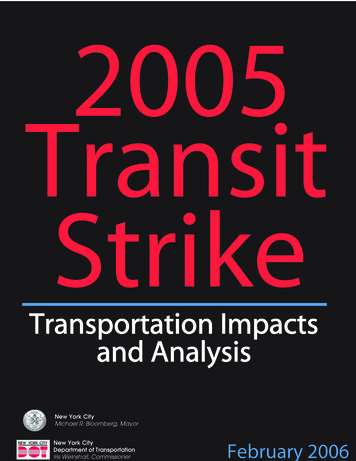
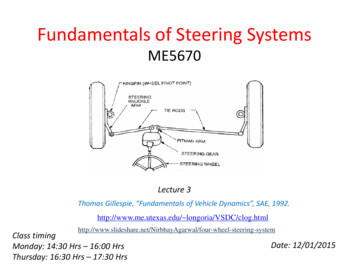

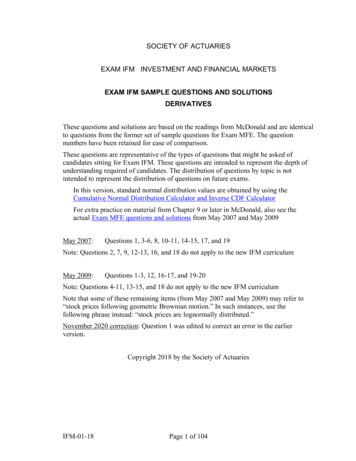
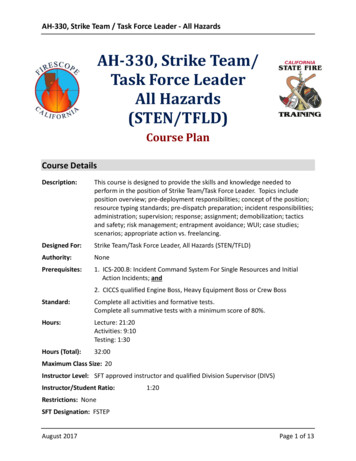

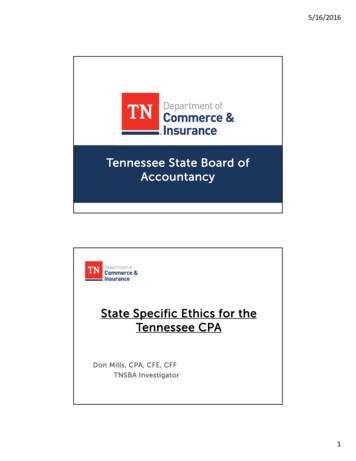
![3184 PPT [Read-Only] - Texas Municipal Courts Education Center](/img/38/00-collins-binder-law-update.jpg)

